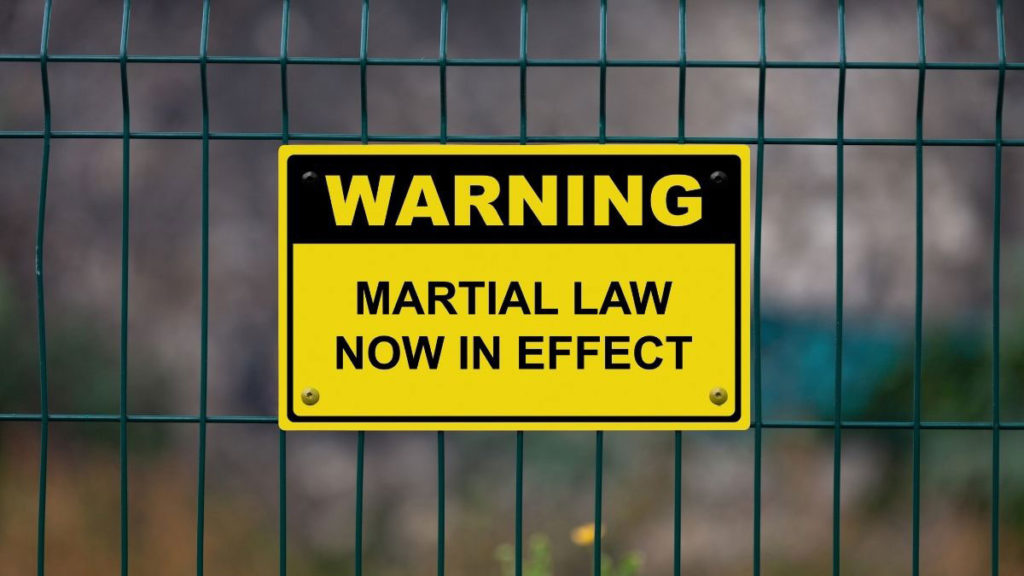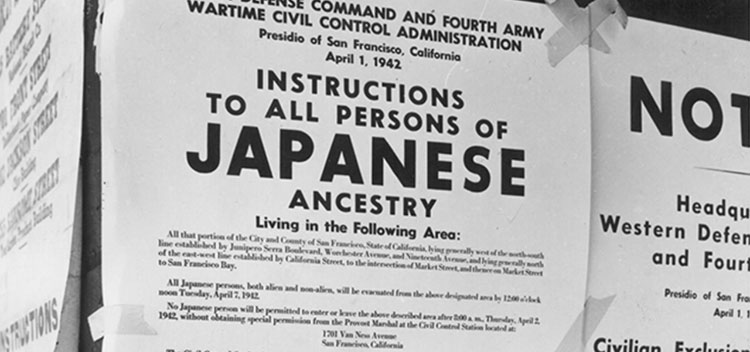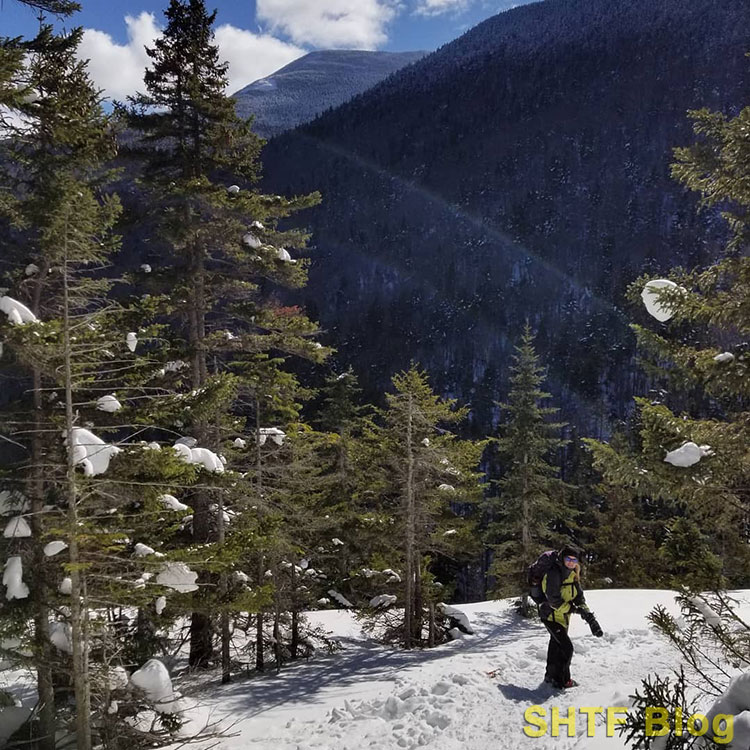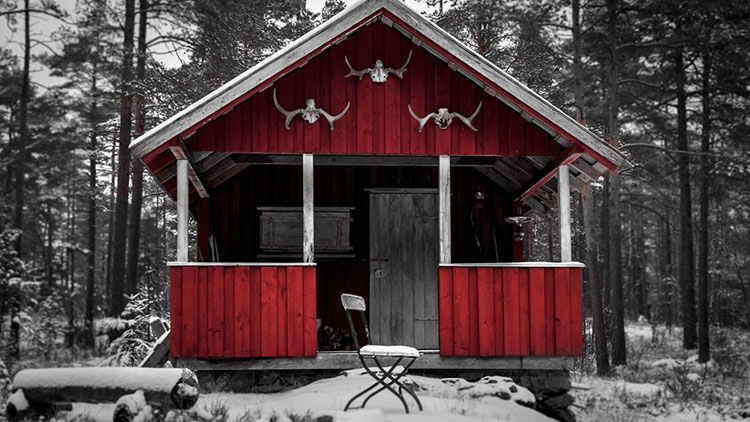
You’re facing some type of SHTF situation and civil order is falling apart. The military is about to step in. Now you’re wondering, where are the safest places during martial law?
Before we get there, let’s go over a few of the martial law basics.
FAQs
Who Declares Martial Law?
In the United States, martial law can be declared by the President of the United States, Congress, or a State governor. (Note: some people argue the President lacks the authority to declare martial law.)
While the U.S. Constitution doesn’t address martial law directly (courts have addressed it), nearly every state in the nation has a constitutional provision that speaks to the imposition of martial law. The President and Congress can declare martial law for the country as a whole. Governors can declare it for their state.
When is Martial Law Declared?
Martial law is declared when the government determines military forces are needed to maintain civil order during periods of war, insurrection, or natural disasters.
It has been declared at least 68 times in the United States (source). Nine of those instances have been since World War II and six of those had to do with desegregation in the South.
What are the Rules of Martial Law?
There are a lot of gray areas when it comes to what can be done during periods of martial law, but there are some rules:
- The military commander has nearly unlimited authority to make and enforce laws.
- Martial law suspends all existing laws and the ordinary administration of justice.
- Civilians may not be subject to military tribunals if civilian courts are functioning.
- Military personnel operating under martial law must act in accordance with local law.
- Citizens who have been improperly wronged by military power have the right to seek remedies.
Top 7 Safest Places During Martial Law
If civil order is falling apart, we have been attacked by enemy forces, or some other crisis is brewing, martial law may be imposed to maintain law and order. Where should you be when that happens?
The safest place is going to depend first and foremost on the crisis at hand. If an earthquake strikes and the military is stepping in to control looting and deliver clean water, martial might be a good thing.
There are times, however, when martial law may not be such a great thing.
Consider, for example, what the United States did to Japanese-Americans following Pearl Harbor. President Roosevelt issued Executive Order 9066, which authorized the Secretary of War and military commanders to place Japanese-Americans (most of whom were American citizens) in internment camps.

Do you think Japanese-Americans thought the military was there to help?
The best place to be during martial law is going depend on the crisis, where you live, and your personal situation. There is not going to be any one best spot for all instances of martial law. The safest place in one situation may be the most dangerous in another.
I present these places in no particular order…
1 – The Military Itself
It might sound counterintuitive, but the military itself might be the safest place to be during martial law. You are the top priority for receiving supplies, gear, and equipment. You have the backing of the military. You’re on the side making the rules.
Alternatively, if the United States is under attack by an enemy state, being in the military means being a target.
2 – Right Where You Are
Don’t assume the best place to be under martial law is somewhere other than right where you are. If the military is showing up on your street to restore order, maybe you want to stay put. A military presence would mean steps are being taken to get the situation under control.
Bugging out could lead to its own set of challenges. Maybe there’s more disorder where you’re planning to go than where you are.
Make sure you have plenty of water stored, a healthy supply of long-term food storage, and the ability to communicate with the outside world. Stay inside. Stay safe.
2 – Away from People
If you look at history during periods of unrest, it’s not always troops to worry about during martial law. It’s often one’s neighbors.
For example, read The Bielski Brothers, a story about a group of Jewish brothers who started a town of Jews in the middle of the woods during the Holocaust. While Nazis were most certainly a problem for The Bielski community, it was often the locals – their neighbors – who ended up notifying authorities about Jews in the area.
We see the same story unfold in the Hans and Sophie Scholl story A Noble Treason. The development of “the German look”, the act of looking over one’s shoulder to ensure snitches weren’t listening, was necessary to avoid the punishment of a military tribunal for “crimes” against the state.
Examine the Rwandan Genocide of the early 1990s. If you look at the book, We Wish to Inform You That Tomorrow We Will Be Killed with Our Families, you’ll find it didn’t matter how long somebody had been the neighbor of somebody else – most would turn against their neighbor.
You don’t need to be suspicious of everyone, of course. In some cases, being near people may be best. You could be closer to family and friends who can watch your back. You could be near people working as a community to rebuild.
4 – As Far from Cities as Possible
Going rural is something most people grasp intuitively. Consider the mass exodus from Paris before the 2020 lockdown. Cities are incredibly population-dense areas that are going to be hotspots of military activity during a crisis. It’s simply an economical use of resources and personnel to focus on urban areas during a period of martial law.
If a general can use 5000 men to control 500,000 people in a city versus 40,000 in a large county, where do you think he’s going?
If you live in a city now and uprooting yourself for a permanent move isn’t possible, at least know how to bug out from a city and know where you’re going to find refuge in advance.
I also recommend Combined Arms Operations in Urban Terrain for anyone that lives in a city. The book will give you an idea of what to expect as the military steps in to restore law and order.
- Used Book in Good Condition
- Army, Department of the (Author)
Another book I recommend is Civil Disturbances. This book “provides discussion and techniques about civil disturbances and crowd control operations that occur in the continental United States.”
- Army, Department of the (Author)
- English (Publication Language)
Know that if you plan to suddenly show up in some rural area during martial law where no one knows you, the locals will wonder what you’re all about. You may very well end up with more eyes on you than if you stayed in the city in the first place.
5 – In the Mountains
Bugging out to the mountains isn’t going to work for everyone. In fact, it’s going to work for very few. But if you live in the mountains already, or you’re looking for a safe place to hunker down, it’s hard to beat the hills.

For the same reasons it’s generally safer in rural communities during martial law than in urban communities, mountainous locations lend themselves to being safer.
There’s a reason that Bin Laden escaped to the mountains of Tora Bora, Afghanistan. They’re hard to navigate and difficult to cross. Mountains are logistical nightmares. You have much more space to disappear in the hills.
On the other side of the coin, how are you going to get supplies when you’re isolated in the mountains? Food runs out fast. It’s colder in the hills. Mountain survival isn’t easy.
If you have some bushcraft experience you’ll do better, but if you have bushcraft experience, you already know how hard it’d be.
6 – The American Redoubt
James Wesley Rawles of Survival Blog is famous for building up the case for Montana, Wyoming, and Idaho being the perfect locations to retreat within the continental US. Rawles is well-respected in the prepper community, so his suggestion is worth noting here.
Rawles points to decreased population density, fewer cities, independent-minded folk, good cropland, and heavy mountains as being the main reasons these are great states to reside in for any disaster. Idaho in particular has long been known to attract preppers.
Note, however, that this region – Montana in particular – has a large number of missile silos. If we were facing a nuclear exchange, this area could be a target. If you’re living in this region, consider using our free designs to a build low-cost fallout shelter.
7 – In Hunting Cabins, Tiny Homes, Bunkers, and Other Hidden Retreats

Houses are publicly listed addresses with all your personal information attached. The only way around this is to follow the advice listed in Bazzell’s Extreme Privacy.
- Bazzell, Michael (Author)
- English (Publication Language)
However, some people have small hunting cabins, tiny homes, bunkers, or other forms of hidden permanent shelters that nobody else knows about in secluded land away from the rest of society.
If there’s one more thing we see throughout history it’s that human rights essentially go out the window during a period of martial law. Confiscation of supplies from “hoarders,” forced labor, intimidation, rape, and other atrocities increase exponentially.
You can get away from it all by getting away from people, but you need shelter. A remote cabin can serve that role.
Additional Tips to Stay Safe During Martial Law
There’s more to staying safe during a period of martial law than just finding a safe place to relocate to. A safe place without the right supplies or know-how could be worse than getting stuck in the wrong place with plenty of supplies and skills.
Be Prepared in Advance
This is going to be obvious to preppers, but if you’re new here – get prepped today so you’re ready for tomorrow!
Stock up on food and water first and foremost. Know how much ammo you might need and how to store it. Stock up on precious metals like silver and know where to hide it in your house.
Be Ready to Bug Out
Even if the safest place during martial law is right where you are, things could change in a second. If you decide to bug in, be ready to bug out just the same.
You never want to box yourself in. Have options. Be able to stay mobile. Have a plan, a backup plan, and a backup plan to your backup plan.
Stay Gray
You likely already know the gray man concept of blending in, seeming like everyone else, a nobody. That applies here.
Don’t brag about your preps. Don’t show off your stockpile during a crisis. If your town has run out of fuel, be very careful about driving around or running a generator. That would attract attention.
Don’t make yourself a target. No matter how prepared and well-off you are, appear on the outside to be in the same boat as everyone else.
Stay Neutral
Unless you’re facing forces that are putting you and your family’s welfare at risk, or if there’s a war at hand where you have to take a stand, stay neutral.
Siding with one side inevitably means making enemies with the other side. Avoid making enemies.
Final Thoughts
The main takeaway here is that martial law is not a safe time. If things were stable, there wouldn’t be martial law in the first place. The safest location is one that won’t place you in constant contact with troops, neighbors, and others.
No matter where you go, you’re going to be at an increased level of danger during such a time. However, if you’re looking for as safe a location as possible, I believe these are the locations that will keep you safer than many other spots.
Don’t delay personal preparedness!
Resupplying your retreat, whether a remote cabin or your suburban home, needs to be taken into consideration for such an event. It does no good to have a fantastic underground bunker in the Adirondacks if there’s only a week’s worth of water inside and you’re 100 miles from civilization.
If you’re looking to read more into this subject, try Joel Skousen’s Strategic Relocation.
- The new 4th Edition with the latest available statistics including text, tables, and maps
- Updated country-by-country and state-by-state reviews
What are your thoughts? Do you agree with my suggestions? Did I miss something? Let me know in the comments below!




No comments:
Post a Comment